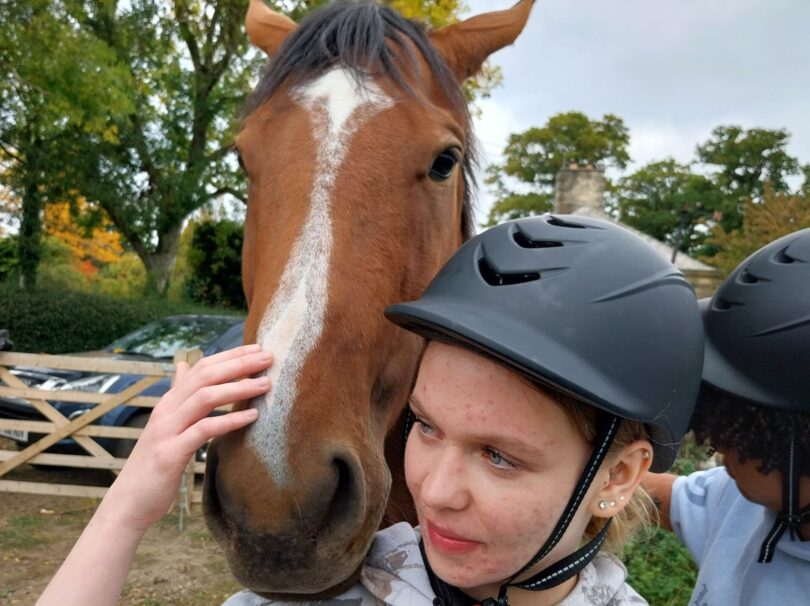Written by Tish Feilden: Co-Founder and Director of Therapeutic Education at Jamie’s Farm
I am an eternal optimist (probably annoyingly so for others at times), but I have been privileged enough to have worked for Jamie’s Farm for the past 15 years. Here, we are lucky enough to see positive change each week, and this certainly feeds my perspective. We work with many remarkable schools and teachers, so I know that there is so much good going on, but reading weekly in the education press about the demoralised state of teachers and pupils alike and the circle of blame that can emerge as a result, it’s clear that the national picture is not so healthy. I cannot help but try to think about what might create change for better morale.
The current struggle
Many teachers and children alike are reporting they have been feeling under the cosh; tried and tested by their ability to jump through loops and hoops of an exam system that lacks relevance to many of the young lives. Given the fast pace of change in the world, are we falling behind by not updating our curriculum goals and teaching methods?
Preparing for the future
School can be unfairly tasked with servicing an education system that is not able to keep abreast of the needs of future employers or of the young adults to flourish in this modern world. Increasingly, children tell me they are less interested in going to university, cannot see the relevance of the subjects they are taught, and more concerned to test their entrepreneurial skills. With the rapid rise of the digital economy, many young people feel disconnected from the traditional curriculum and are instead drawn to entrepreneurial ventures or social media-driven goals. According to a recent study, 75% of Gen Z express an interest in starting their own business. Yet, we still haven’t fully adapted our educational goals to reflect this growing trend. Although this shift should not discount the need to foster curiosity, interest in learning, building of positive values and social and emotional competence.
The administrative burden
Teachers recently phoning in to recent ‘Any Answers’ on Radio 4 also spoke of the burden of admin that accompanies teaching and exhausts, distracts, and demoralises them, not the face-to-face work with students. The average working week of a full-time teacher was reported by Schools Week as over 52 hours per week. It is a relatively small proportion of this that is time spent with students, which makes me wonder if we need to take a clear-sighted view of how much of this is necessary and how much is admin creep. I know the world requires accountability, but the balance of time spent in building essential, motivational relationships surely needs equal prioritisation.
Engaging parents and the community
Alongside task exhaustion is the cry of under resourcing- Is it naïve of me to suggest that we could enlist more of the parents and communities to take part in supporting schools? As a parent of primary children, I felt welcomed through to the door to contribute – from extra curricula activities to supporting class teachers. Secondary school felt impenetrable, and I like many parents fell back from offering involvement and put our energies elsewhere. The lack of support for children with SEND is a tragedy. Very often, support in the form of an extra adult, whether a TA or behaviour support specialist, to give time and help to vulnerable students can avert many downward spirals as a result of pushing boundaries and disruption. An extra adult giving valuable time and attention to meet those children’s needs could enable a teacher to be able to continue to teach.
The power of supportive relationships
I can’t help thinking there are people willing to help but who need an active invitation and welcome to be a part of the school community. If all schools could have dedicated time and resource to forge links with their communities, I feel not only would the children benefit from the role modelling of shared kindness, generosity and connection, but it would help build the sense of belonging that we know helps children thrive. With the increase in sanctions in many schools there is a growing alienation of children and their parents, and this ping pong game of blame is only growing divisions. It may be the loudest voices reported are those of dissent, but recent riots showed the solidarity marches overcame the fire of hatred and tapping into this well of good will in communities may be able to nourish schools where the next generation spend their greatest number of waking hours.
Ideas for revitalising school community links:
- Organise community events: Create opportunities for parents, community leaders, and teachers to collaborate on projects to support the school.
- Involve local businesses: Invite local entrepreneurs to speak to students about alternative career paths or offer internships.
- Create more opportunities for parent volunteering: Develop programs that encourage parents to help with extracurricular activities or provide additional classroom support.
- Utilise technology: Use social media and digital platforms to engage with parents and local organisations, showcasing school projects and encouraging wider involvement.
A hopeful path forward
Ultimately, the key to energising schools lies in rekindling the links with the communities around them. By reimagining the role parents and local volunteers can play, and addressing systemic challenges, hopefully we can inspire hope and confidence in both teachers and students. Positive change is possible if we work together to build it. The 16,000 children and many thousands of teachers who have come to Jamie’s Farm have taught me that change can happen in short space of time when we focus on a positive narrative and have belief in the potential of the next generation.



